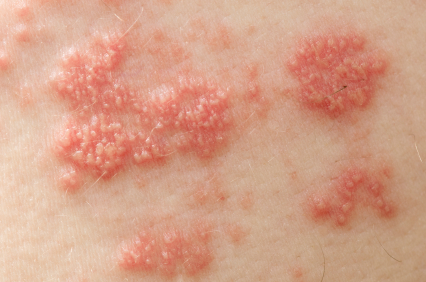What is Herpes Zoster and Who Gets It?
We've all heard about Herpes Zoster Virus (HZV) before but what is it exactly?
If you've had chickenpox as a kid, chances are you've developed antibodies to the virus.
So you won't get infected with chickenpox again even if you find yourself exposed to the infection later on.
But did you know that with this exposure, you could be in a much greater risk of acquiring Shingles?
Shingles is another term for an HZV infection. It is an infection of the skin characterized primarily by skin rashes that appear as blisters and are commonly painful.
It occurs when a dormant ("sleeping") chicken pox infection becomes activated in an older adult.
Here are the essential things that you need to know about the HZV virus:
What is Herpes Zoster (HZV)?
In essential, HZV (or shingles) is simply a painful skin rash that usually manifests in a strip or a band on one particular site of the body like the face, the shoulders, and the upper or lower limbs. It is readily transmitted through skin-to-skin contact.
What causes HSV?

(Raised red bumps and blisters caused by the Herpes Zoster Virus)
The same virus that causes chicken pox in kids or young adults, which is the Varicella Zoster Virus, also causes HZV or Shingles. This means that if you already had a case of chicken pox before, then the chances of you acquiring herpes zoster is increased.
Some causes of Shingles also include certain types of medications that may trigger the virus to "wake up". The process in which the virus is reactivated in this way still need more research to completely explain the phenomenon.
How can the Varicella Zoster Virus cause HZV?
In much the same way that HSV 1 and HSV 2 remain dormant for a time inside the human body after an initial infection, the Varicella Zoster Virus (VZV) is also able to remain dormant in the nerve endings of the human body. This is why some older adults have higher chances of acquiring Shingles if they get exposed to the virus again.
How common is HZV?
HZV is a fairly common infection nowadays, with about 1 in every 4 people tested having the infection at least at one point in their life.
Although the virus can occur at virtually any age, it is exceedingly rare for a person to get re-infected.
However, a few studies have shown that an increased risk of reinfection can occur among those aged 50 and over.
Which part of the body does the HZV virus usually infect?
HZV infection usually manifests on the part of the body that the infected nerve supplies. This means the virus most commonly affects the abdomen, chest, and upper portions of the face.
What are the Symptoms of an HZV infection?
There are only two primary HZV shingles symptoms: pain and rashes.
- Pain. The pain associated with the virus is usually a localized type of pain, which can be felt practically in any part of your body, hugely dependent on what nerve is affected.
- Rashes. Rashes associated with the infection appear some 2-3 days after the onset of pain. These rashes start as red blotches, which would later on progress into itchy blisters.
A typical HZV infection episode typically lasts about 2-4 weeks after onset.
Is Herpes Zoster contagious?
Yes! In fact, if you haven’t been infected with chickenpox before, then you can catch chickenpox from a person infected with HZV. The rashes associated with the virus are contagious until such time that they are all dried up (and form scabs).
What Increases the Risk of Getting Infected with HZV?
Like most infections, there are a few factors that can markedly increase a person’s likelihood of contracting the virus. Here are some of them:
- Old Age. As with any other infection, advanced age could mean a higher risk of contracting the virus. This is due to a decrease in the immune system in which the body could no longer efficiently fight off the virus.
- Immuno-compromised People. Immune-deficient people, like those who are currently suffering from another disease or a fever, are about 20 times more prone to a herpes zoster infection.
- Stress. Any type of stress (even emotional or psychological) is also likely to increase the chances of HZV infection. In fact, studies have supported there is a higher risk of acquiring the infection when a person is depressed.
- Mechanical Trauma. Any sort of mechanical trauma can reactivate the virus in an infected individual because it can stimulate the nervous system, wherein the virus currently remains dormant.
Help! I'm Still Confused!
If you think you have these signs and Herpes Zoster symptoms, best is to visit your family doctor and have it confirmed with an appropriate lab test and diagnosis.
If you are still unsure about your symptoms:
- Why not take a look at some Herpes Photos to get a clearer picture of what you have?
- Better yet, read our article about the Early Signs and Symptoms of Herpes to find out more about what you are experiencing in your body.
With proper care and management, most people with Shingles will definitely get better and are unlikely to have another outbreak again.


